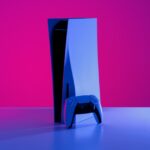Editor’s note: Amazon’s October Prime Day event, aka Prime Big Deal Days, is set for October 8th and 9th. Fortunately, if you’re looking to get a leg up on your shopping ahead of the two-day deal blitz, we’ve already put together a guide to the best early Prime Day deals you can get.
Whether you’re wearing them for the morning commute, while traveling, or if you’re simply trying to find some peace and quiet while working at home, noise-canceling headphones are a more essential piece of kit nowadays than ever before. And you’ve got a slew of great options to pick from; it’s hard to make a bad choice.
There are longtime heavyweights like Bose and Sony to pick from. Apple has quickly carved into the market with the luxurious AirPods Max. And if you’ve got an ear that demands the best audio quality, headphones from Bowers & Wilkins and Sennheiser might appeal to you more than the mainstream contenders.
Not everyone loves the feel of earbuds, and there are scenarios where over-ear and on-ear headphones are just simpler or make more sense than wireless buds — particularly if lengthy battery life matters to you.
No matter how you’re using them, the criteria for picking the best noise-canceling headphones haven’t changed.
The “best” headphones for you will differ based on which of those factors you prioritize and care about most, but our overall pick for the best noise-canceling headphones remains Sony’s WH-1000XM5. They offer a combination of sound quality, comfort, and great noise cancellation that’s hard to beat.
The best wireless headphones for most people
$398
With improved comfort, refined sound, and even better active noise cancellation, Sony’s WH-1000XM5 offer a compelling mix of features for the price.
Battery life: 30 hours / Multipoint: Yes / Audio codecs: LDAC, AAC, SBC Connectors: USB-C (charging), 3.5mm headphone jack (audio)
Sony’s WH-1000XM5 have a completely different design from their predecessors. The changes result in greater comfort when you’re wearing them on your head for extended periods of time — like on a flight or if you’re at the office.
Noise cancellation has been further improved from the already-stellar performance of the M4, putting Sony at the front of the pack compared to all major competitors. Sound quality is more detailed and balanced than the older 1000XM4; the low end is still punchy but tighter and less boomy than before. The M5 offer the best voice call performance in the 1000X series to date, and they can connect to two devices simultaneously, so you can stay clued in to what’s happening on your phone when you’re working away on your laptop or tablet.
Sony’s headphones also include unique features like “speak to chat,” which automatically pauses your music and pipes in ambient audio whenever you start talking. Or you can hold one hand over the right ear cup to activate quick attention mode, which is convenient when grabbing a coffee or listening to airport announcements. And like other high-end headphones, the 1000XM5 can detect when they’ve been removed from your ears for auto-pause.
The main downside of the WH-1000XM5 is that at $399.99, they’re more expensive than prior models. That’s a big reason to consider the 1000XM4, which were our previous top pick for noise-canceling headphones. They remain part of Sony’s lineup and can often be found on sale.
Read my full review of Sony’s WH-1000XM5.
The best noise-canceling headphones for travel
$429
Bose’s latest flagship headphones are a replacement for the Noise Cancelling Headphones 700 that offer a more travel-friendly design, spatial audio, better call quality, excellent comfort, and some of the best noise cancellation around.
Battery life: 24 hours / Multipoint: Yes / Audio codecs: aptX Adaptive, AAC, SBC Connectors: USB-C (charging), 2.5mm headphone jack (audio)
Bose’s QuietComfort Ultra Headphones are basically a blend of the company’s prior Noise Canceling Headphones 700 and QuietComfort 45 that borrow the best traits from both — while throwing in a new “immersive audio” listening mode. Like past Bose cans, they’re very light and comfortable on your head, even when worn for long stretches of time. Best of all, unlike the Noise Canceling Headphones 700, these can be folded to make them easier to travel with.
Their 24-hour battery life is more than adequate, and Bose has added support for the aptX Adaptive Bluetooth codec for improved audio fidelity on Android devices.
Photo by Chris Welch / The Verge
The immersive audio feature works well on some songs, but less so on others. It’s worth experimenting with, but even if you leave it off entirely, you’re left with best-in-class noise cancelation, pleasing sound, and a helpful “aware” transparency mode.
Read my full review of Bose’s QuietComfort Ultra Headphones.
The best wireless headphones for iPhone owners
Apple’s AirPods Max feature exemplary build quality, sound phenomenal, and keep up with the best at noise cancellation.
Battery life: 20 hours / Multipoint: No / Audio codecs: AAC, SBC Connectors: Lightning (audio and charging)
There was definitely some sticker shock when Apple introduced a $549 set of noise-canceling headphones in 2020. The AirPods Max cost significantly more money than any of our other recommendations. But Apple’s build quality is on another level: these trade the plastic you’ll find in many noise-canceling headphones for steel and aluminum, and the ear cups are a breathable mesh fabric. They’re hefty headphones, there’s no denying that. But aside from Apple refusing to include a headphone cable in the box, there’s nothing about the AirPods Max that feels cheap. And I appreciate the simplicity of using the digital crown for controls instead of relying on hit-or-miss gestures like taps and swipes.
The most important part is that the AirPods Max deliver audio quality that’s up there with the best high-end Bluetooth headphones. They have an immersive, wide soundstage and fantastic dynamics, and you’ll find yourself hopping around your music library just to hear what they bring out in your favorite songs.
Apple’s noise cancellation is on par with Sony and Bose, and no one does transparency mode better; at times, it can make you think you’re not wearing headphones at all. Extra features like Spatial Audio (surround sound for movies and TV shows) and automatic switching between Apple gadgets help make it a bit easier to swallow their daunting price.
But the AirPods Max do have faults. The carrying case is abysmal, battery life is only average for the category, and just like regular AirPods, they’re designed with Apple’s ecosystem in mind. It gets much harder to justify dropping $550 on them if you live outside the iPhone and Mac universe.
Also, it’s worth noting that Apple recently introduced a new pair of the AirPods Max with USB-C charging and five new color options. We haven’t had an opportunity to test them yet, but given just how little they differ from Apple’s existing headphones, we don’t anticipate performance being any different. The question is whether you’re willing to pay the full retail price of $549 to rid your life of Lightning when the original Max can often be found on sale for less than $400, especially during events like Amazon Prime Day.
Read my full review of the AirPods Max.
The best-sounding wireless headphones
$399
The PX7 S2e noise-canceling headphones from Bowers & Wilkins feature a luxurious design and improve on the previous S2 model with superior dynamics and richer overall sound quality.
Battery life: 30 hours / Multipoint: Yes / Audio codecs: aptX Adaptive, aptX HD, aptX, AAC, SBC / Connectors: USB-C (audio and charging)
If sound quality is priority number one, then Bowers & Wilkins has you covered with the PX7 S2e headphones. They exhibit superb, detailed sound quality that some people prefer to the AirPods Max. The Bowers & Wilkins cans are true to the company’s legacy and style, with a fine-crafted design that exudes quality. And the newer “e” variant has a revamped digital signal processing that can bring out the best audio quality from streaming music.
I prefer their physical buttons over the tap/swipe ear cup gestures of Sony’s 1000XM5. With 30 hours of battery life, they’re more than competitive with mainstream, less expensive picks. And the sound profile is delightfully warm and will bring out the most from your favorite music. The main downside of the PX7 S2e is that there’s no traditional 3.5mm or 2.5mm output for a headphone cable. You can still listen wired over USB-C, however.
Read my full review of the Bowers & Wilkins PX7 S2.
The noise-canceling headphones with the best battery life
With marathon 60-hour battery life and sublime comfort, the Sennheiser Momentum 4 Wireless also make good on the company’s reputation for detailed, expansive sound quality.
Battery life: 60 hours / Multipoint: Yes / Audio codecs: aptX Adaptive, aptX, AAC, SBC / Connectors: USB-C (audio and charging), 2.5mm headphone jack (audio)
Sixty hours. They can last for up to 60 hours on a single charge. That’s really all you need to know about the Sennheiser Momentum 4 headphones if you’re looking for an endurance champ. But they also sound terrific and prove extremely comfortable over long listening periods. This combination doesn’t come cheap, but you can find some good occasional deals on them.
Sennheiser’s Momentum 4 Wireless headphones edge out Bowers & Wilkins on comfort thanks to their lighter design, and the noise cancellation is slightly better. Next to the Sonys and Bose’s QC Ultra Headphones, it doesn’t get much cozier. These are headphones you can wear for multiple hours without any fatigue or pressure on your ears.
Sennheiser’s sound signature is a bit more expressive and puts more emphasis on bass than B&W, but that upper treble range still comes through crystal clear. My only real nitpick with the Sennheisers is that they tend to occasionally power on inside the case for no obvious reason and automatically connect to my phone.
Both the B&W and Sennheiser headphones support multipoint connectivity and a range of Bluetooth codecs, including SBC, AAC, aptX, and aptX Adaptive.
Read my full review of Sennheiser’s Momentum 4 Wireless.
The best noise-canceling headphones for style
Marshall’s noise-canceling headphones stand out for their unusual look and easy-to-use joystick for controlling your music. They’re also a battery life champ with up to 45 hours of playback.
Battery life: 60 hours / Multipoint: Yes / Audio codecs: aptX Adaptive, aptX HD, aptX, AAC, SBC Connectors: USB-C (charging), 3.5mm headphone jack (audio)
Marshall’s wireless headphones have proven surprisingly popular, and the company’s most expensive pair is also its best yet. The Monitor II ANC headphones are priced at $320, which puts them on the same playing field as Bose, Sony, and other tech companies that have been making premium noise-canceling cans for many years.
Marshall falls short of those brands in sound quality and ANC, but the Monitor II still provide warm, textured sound and perform decently at cutting down on ambient noise. But they definitely stand out from the pack in looks, with a design that speaks to the company’s heritage. The headphones fold up for easy carrying, and Marshall’s signature gold joystick makes the Monitor II simple to control.
They can also last up to 30 hours with NC enabled or up to a staggering 45 hours if you’re already someplace quiet and can do without the feature. That impressive longevity beats our primary picks. A lack of AAC codec support at this price stings, but I’ve enjoyed the Monitor II every time I’ve put them on. They’re more than just an amp brand stamped onto an average pair of headphones.
Update, October 1st: Updated to reflect current pricing and mention Amazon’s forthcoming Prime Day sale. Brandon Widder also contributed to this post.
Read the full article here














